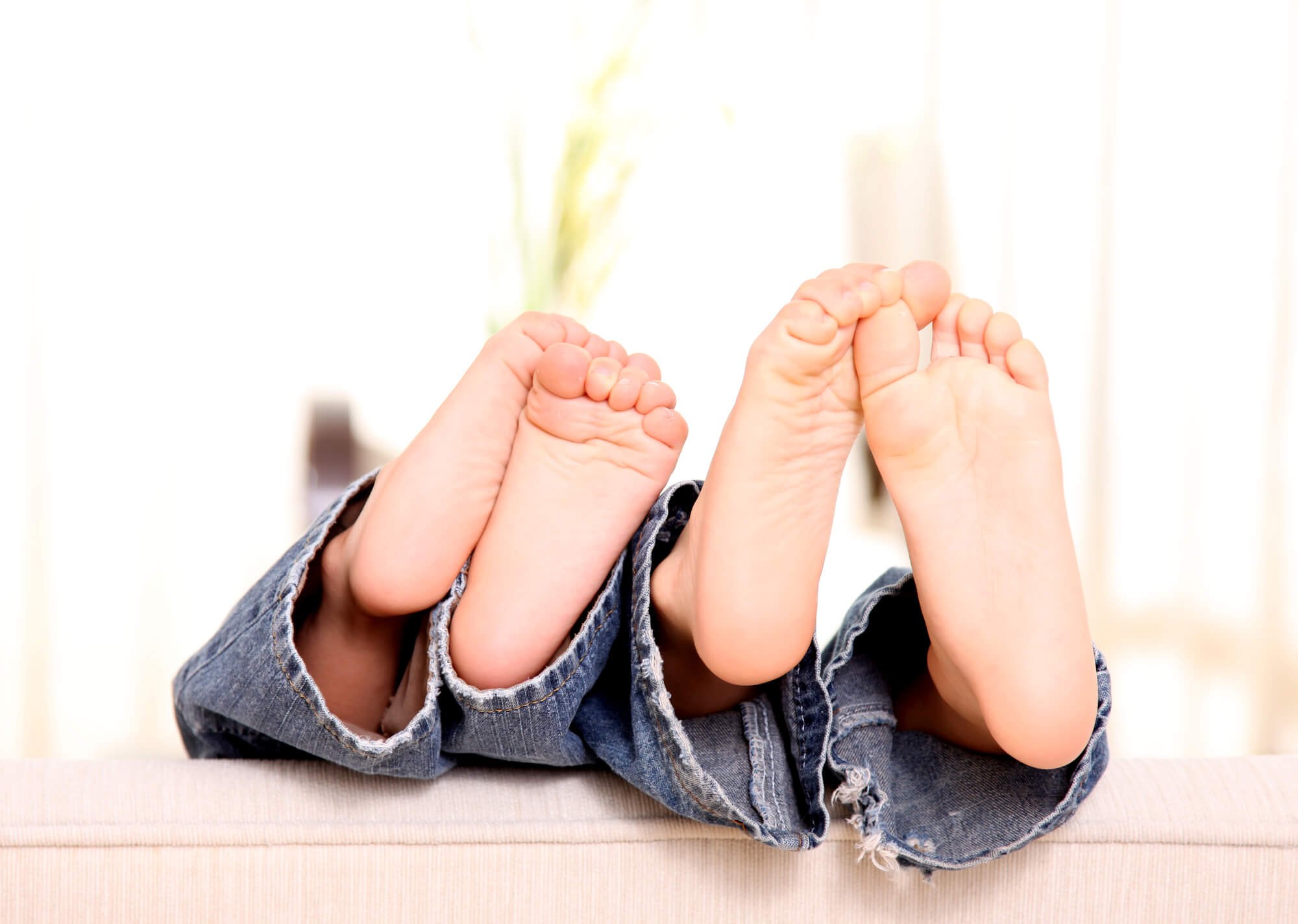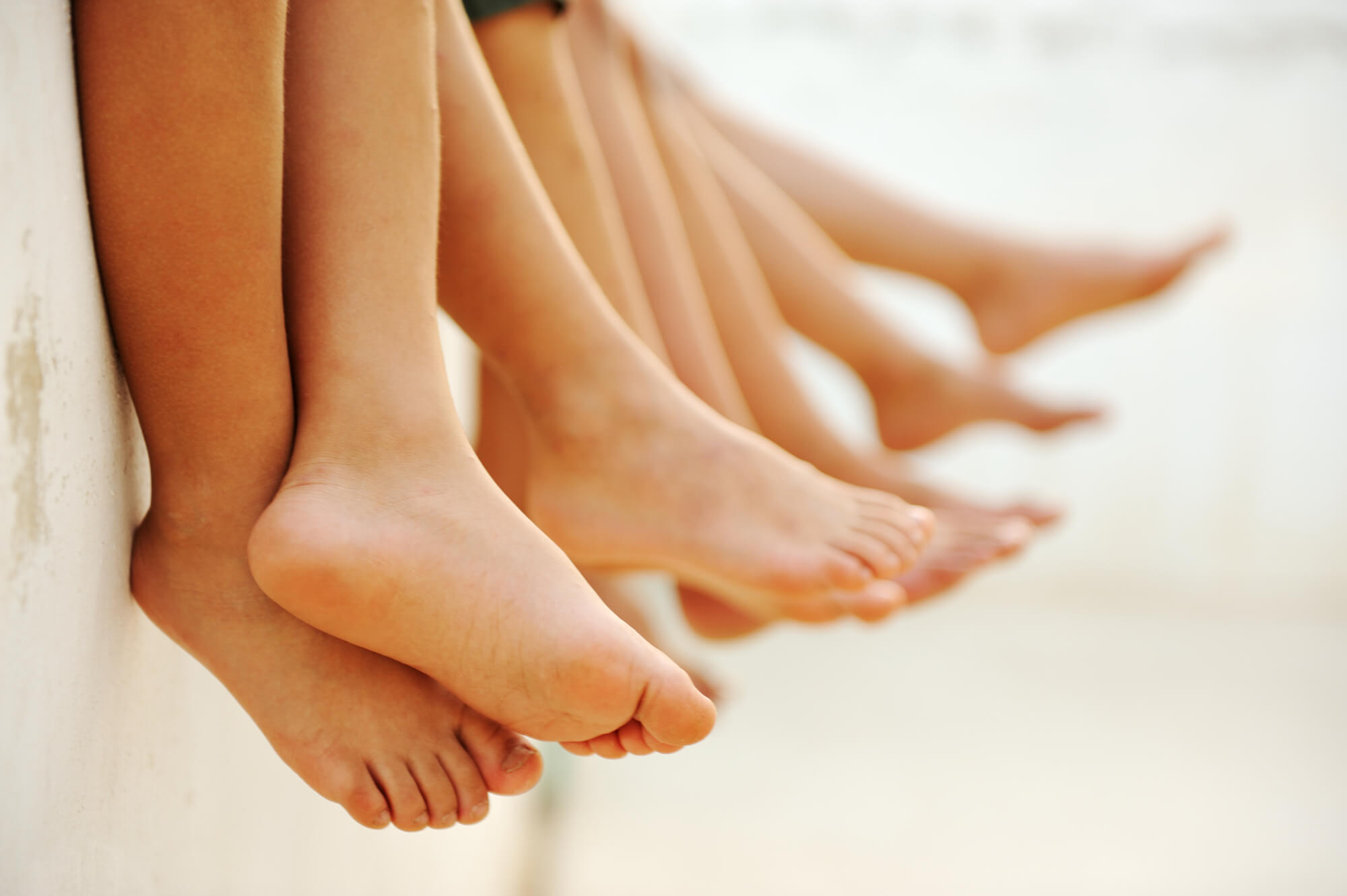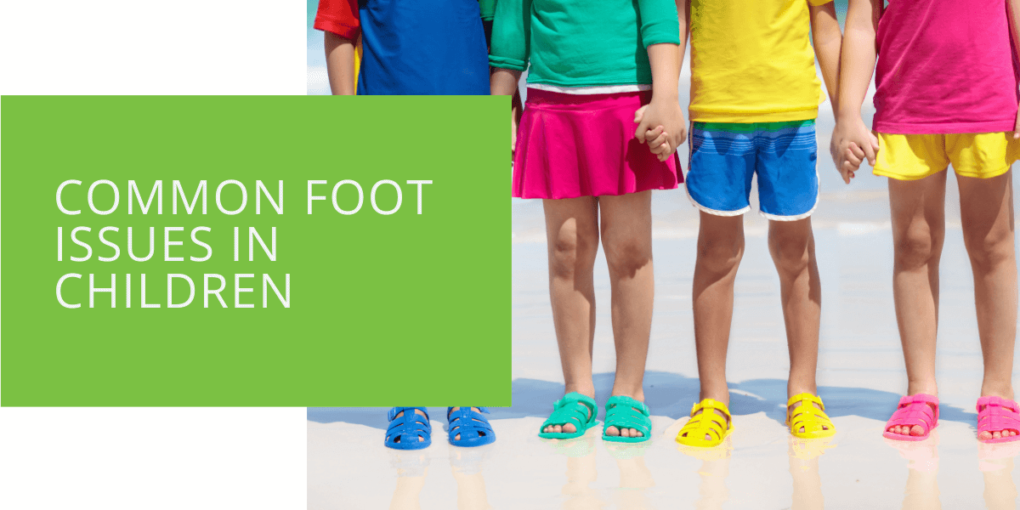Common Foot Problems in Children
Ensuring our children's overall health and well-being as parents are crucial. However, we often overlook foot care, which can lead to significant discomfort and pain for children of all ages. This article will discuss common foot problems in children, including flat feet and fallen arches, in-toeing, heel pain, ingrown toenails, plantar warts, toe walking, bowed legs, and knock-knees. Understanding these problems and their causes can help parents take proactive steps toward their child's foot care, preventing long-term complications.
Flat Feet and Fallen Arches
Flat feet and fallen arches are among children's most common foot problems. A flat foot is a condition in which the arch of the foot is absent or flattened. It occurs when the muscles and tendons in the foot do not work correctly, and the arch fails to develop correctly.
Children with flat feet may experience foot pain or tire easily when walking or running. They may also have trouble finding shoes that fit comfortably. Flat feet can also lead to other problems, such as shin splints or knee and hip pain.
To treat flat feet, parents should consider orthotics, which are custom-made shoe inserts that provide arch support. Arch support can help improve the foot's alignment and reduce pain. Parents can also encourage their children to do exercises that help strengthen the muscles in the feet and ankles, such as toe curls and heel raises.
In-Toeing
In-toeing is when a child's feet turn inward when walking or running. This problem can occur for various reasons, including abnormal bone structure or muscle weakness. In-toeing can also be caused by a curved foot, a congenital foot abnormality that affects the growth plates in the foot.
In-toeing can lead to tripping and falling and can also cause pain in the feet, legs, and hips. Treatment for in-toeing depends on the underlying cause. Sometimes, the condition may resolve independently as the child ages. However, if the in-toeing persists, parents may need to consider orthotics or physical therapy to help the child develop better foot alignment and muscle strength.

Heel Pain
Heel pain is a common foot problem in children, particularly in active children who participate in sports. The most common cause of heel pain in children is Sever's disease, which is a condition that affects the growth plate in the heel bone. The condition is more common in boys than girls and is typically seen in children between 8 and 14.
Sever's disease can cause significant heel pain, particularly during physical activity. Treatment for the condition typically involves rest, ice, and stretching exercises. Parents may also consider orthotics to support the arch and reduce pressure on the affected heel.
Ingrown Toenails
Ingrown toenails occur when the corner or edge of a toenail grows into the skin. The condition can cause pain, swelling, and redness around the affected toenail. Ingrown toenails can be caused by improper nail trimming or tight-fitting shoes.
Parents should encourage their children to wear shoes that fit correctly and avoid tight-fitting footwear to treat ingrown toenails. Parents can also help their child trim their toenails correctly, cutting them straight across and avoiding cutting them too short or rounding the corners. In some cases, ingrown toenails may require medical treatment, such as removal of the affected portion of the nail or antibiotics if an infection is present.
Plantar Warts
Plantar warts are small growths that appear on the sole. The warts are caused by the human papillomavirus (HPV) and can spread from person to person. Plantar warts can cause pain and discomfort, particularly when standing or walking.
Treatment for plantar warts typically involves removing the wart through freezing, laser therapy, or surgical removal. Parents can also encourage their child to keep their feet clean and dry and avoid walking barefoot in public areas to reduce their risk of developing plantar warts.

Toe Walking
Toe walking is a condition in which a child walks on their toes instead of the soles of their feet. While toe walking is common in toddlers learning to walk, it can persist in older children and be a sign of an underlying condition.
Toe walking can be caused by various factors, including muscle tightness, neurological conditions, or orthopedic problems. Treatment for toe walking depends on the underlying cause and may include physical therapy, stretching exercises, or orthotics.
Bowed Legs and Knock-Knees
Bowed legs and knock-knees are conditions that affect the alignment of the legs. Bowed legs occur when the legs curve outward, while knock-knees occur when the legs curve inward.
In most cases, bowed legs and knock-knees are a normal part of a child's development and will resolve independently as the child grows older. However, if the condition persists or causes pain or discomfort, parents may need to consider orthotics or physical therapy to help improve leg alignment.
Tips for Preventing Foot Problems in Children
Prevention is key when it comes to foot problems in children. Parents can take several steps to help keep their child's feet healthy and pain-free. These include:
- Encouraging regular exercise to help strengthen the muscles in the feet and ankles.
- Ensuring their child wears shoes that fit correctly and provide adequate arch support.
- Encouraging good hygiene, such as keeping the feet clean and dry.
- Teaching their child proper nail care, including cutting their toenails straight across and avoiding cutting them too short.
- Monitoring their child's foot growth and seeking medical attention if any concerns arise.
Conclusion
Foot problems can affect children of all ages, and it is essential for parents to understand the common foot problems in children and how to prevent them. Parents can help ensure their child's feet remain healthy and pain-free by taking proactive steps towards their child's foot care. If your child experiences foot pain or discomfort, it is crucial to seek professional help from a podiatrist to address the problem and prevent any long-term complications.

